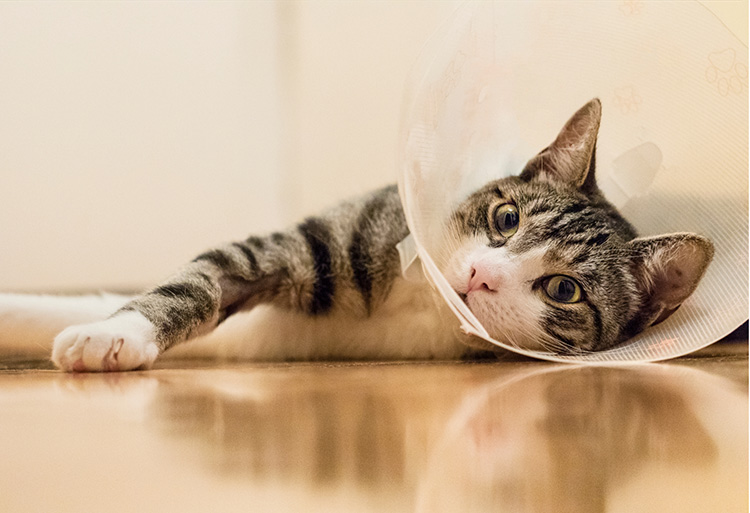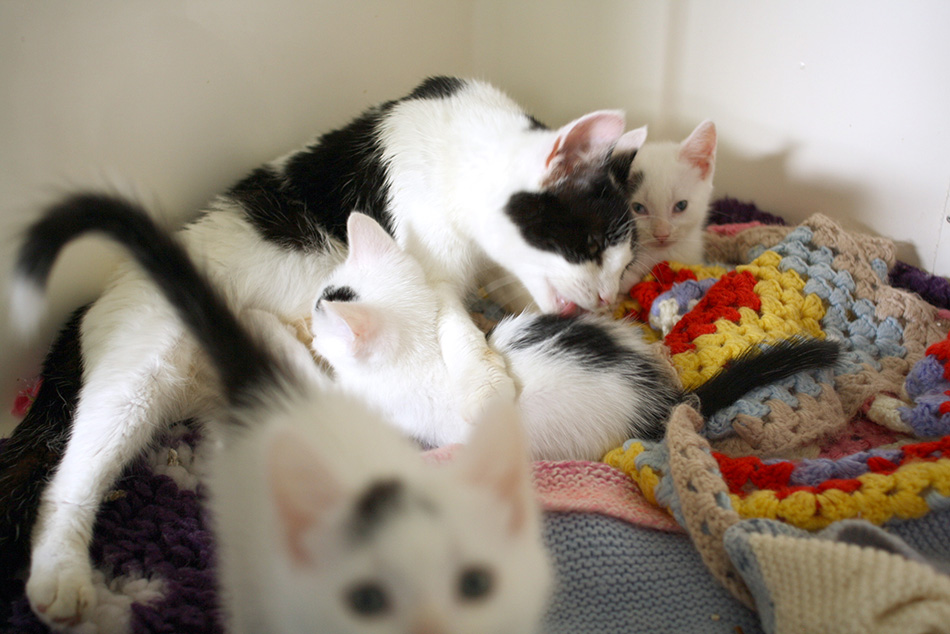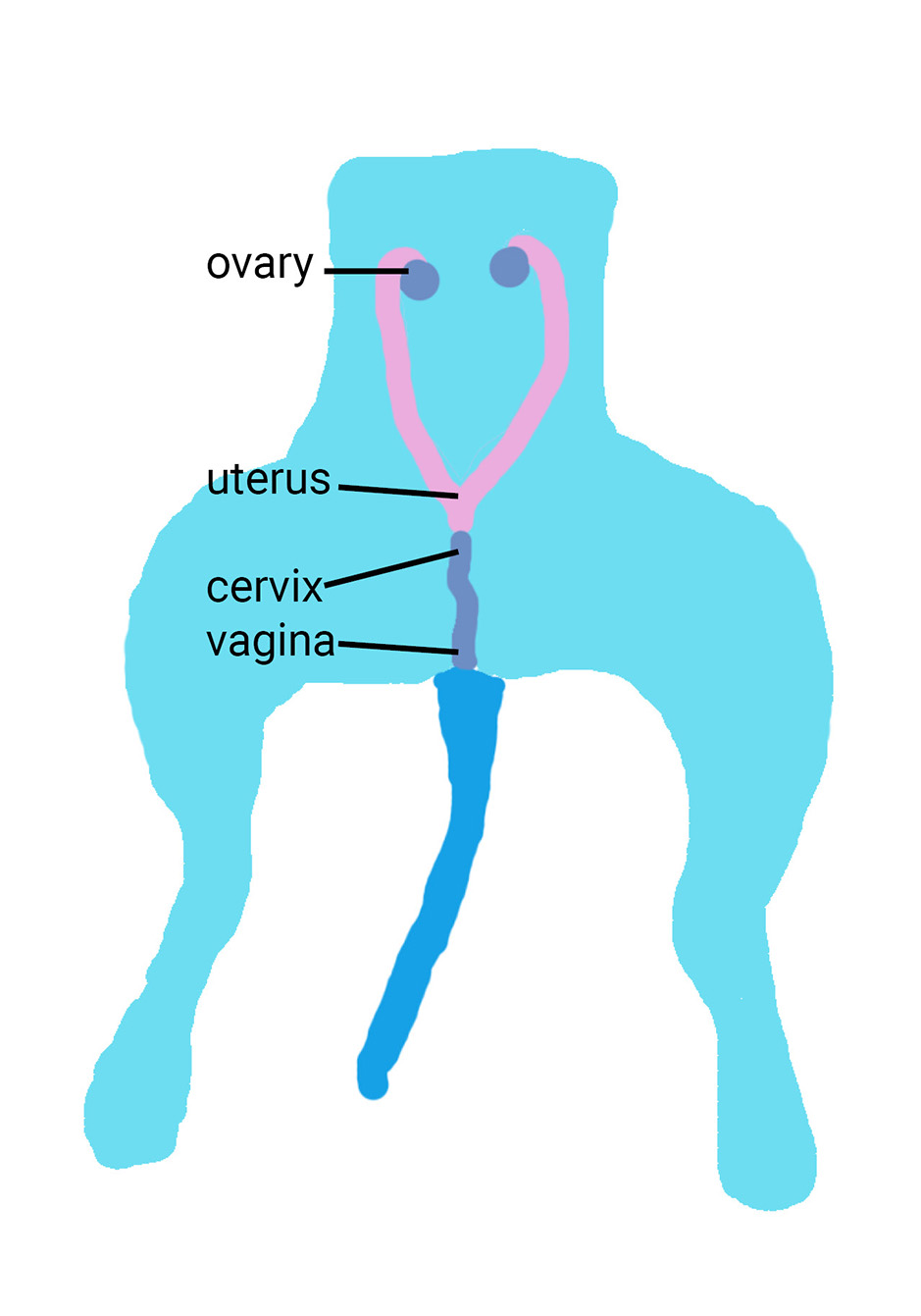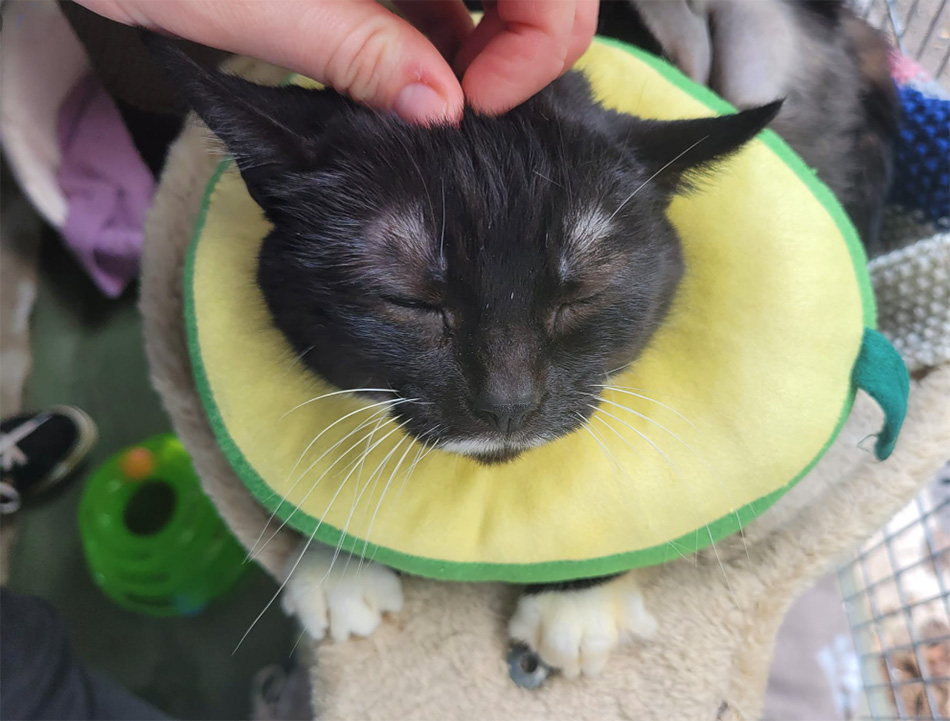New cat
How to set up your home to help your new cat settle in quickly
Cats, Adopters, Cat behaviour, Kitten

You can neuter your cat at around four months old to avoid unwanted litters. Even though they're small, four months old is actually a good time to neuter male and female cats. This is because younger kittens have smaller, more elastic blood vessels and less abdominal fat, which makes surgery easier and safer. The ovaries are easier to identify, allowing for smaller incisions, which means quicker healing and fewer complications.
But if your cat is older, that doesn’t mean it's too late! You can neuter your cat at any time. If your female cat is in heat, your vet will advise when to book in for their surgery.

Neutering is a common procedure that vets have practised many times. Our Head Vet Michaela performed 100 neuters in one day when volunteering in Asia!
Follow your vet’s pre-operation instructions carefully – this will involve control over food and water intake the night and morning before your vet visit.
At the vets, they will be given a light sedative, before heading to the surgery room to receive a full anaesthetic and pain relief for the operation.
The scrotum is shaved, and a small incision is made through which the testicles are removed. In kittens, this is quite similar to shelling a pea! The cuts are so small they probably won’t even have stitches, and the wound will heal up itself. In older males, it may be a larger wound that requires stitches and a slightly longer healing time.
 Female cats
Female catsMost cats have a ‘flank spay’ which is entering through the side of their abdomen. The skin will be shaved along their side and an incision is made along their flank. Inside, a small cut is made which allows them to remove the uterus and ovaries, and a stitch is added to ‘tie off’ the cervix. The abdomen and skin are then stitched back together layer by layer. It leaves a line of stitches which is quickly covered as their fur grows back.
You should be able to take your cat home the same day. Make them a quiet spot - perhaps confine them to a room so you can keep an eye on them. They will be sleepy and disorientated for about a day.
You will probably be given a cone to stop your cat nibbling their wounds, but you can also get soft buster collars or body suits.
You will have a follow-up vet appointment - probably two for a female cat - but always call your vet if you're concerned about how they are healing or if they are off their food for more than 48 hours.
Keep your cat indoors and reduce playtimes so they can rest. Male cats can go back outside as soon as they are healed. Female cats with need a couple of weeks’ rest.
